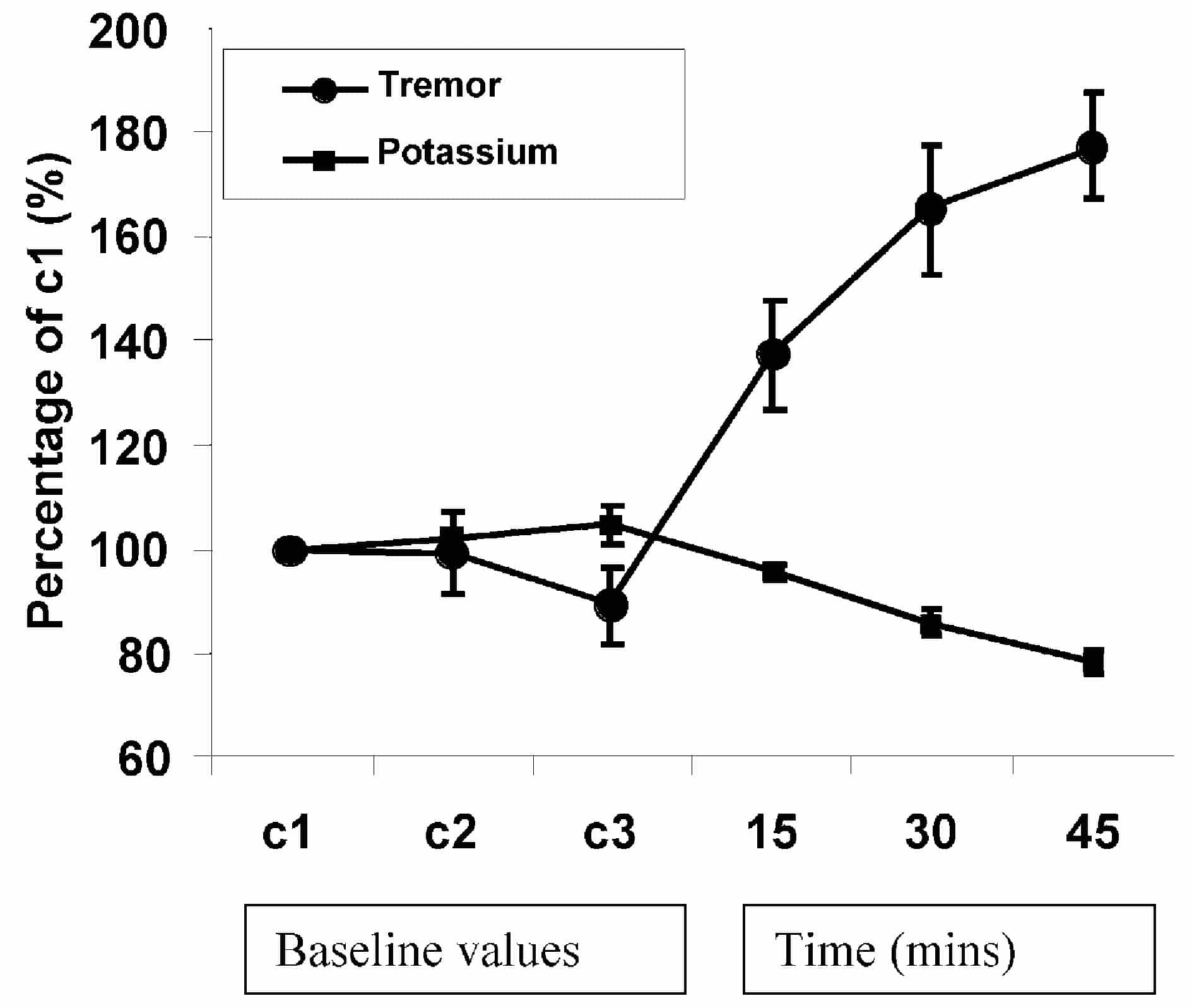Adrenergic agonists increase tremor size. The effect has been attributed to changes in the contractile properties of muscle rather than changes in the neural control system (Marsden et al. 1967). Here we use an isometric method of recording tremor to show that an adrenergic drug reduces stability and that this is associated with a clear change in the contractile characteristics of the muscle. Also, stability appears to correlate directly with the plasma potassium concentration.
With local ethical approval and informed written consent of the subjects we recorded tremor in an isometric force maintenance task. Seven subjects used the left first dorsal interosseus muscle to maintain a static force equal to 20 % of the maximal voluntary force. Tremor was recorded under control conditions and following infusion of the Beta2 agonist drug, Terbutaline (Bricanyl¿) at 8 µg kg-1 h-1 by a cannula inserted into the left ante-cubital vein for a period of 45 minutes. A cannula was inserted in to the right ante-cubital fossa for venous blood sampling. The subject relaxed for a period of 45 minutes during which three control measurements of tremor were made and venous blood samples were taken. Blood samples were processed and stored at -80 °C and were subsequently analysed for plasma K+ (indirect ion specific electrode). In these experiments there were a number of infusions of different drugs and placebos with each subject being infused on 5 occasions. The subject was blind to the agent being infused.
Figure 1 shows the relationship between tremor size and plasma concentration of K+ as a percentage of the initial control value (C1). Tremor was measured as the RMS amplitude of the force signal, bandpass filtered between 6-25 Hz. The abscissa shows values at 15 minute intervals. The terbutaline infusion started after C3 and continued for 45 minutes. Data points are mean values ± S.E.M. Repeated measures analysis showed that Terbutaline infusion produced a significant decrease in postural stability (P < 0.05). Tremor size and plasma K+ vary reciprocally. This result is similar to that of Fowler and Lipworth (2001) who suggested that tremor measurement or plasma K+ could equivalently be used as a surrogate for the pharmokinetic profile of inhaled salbutamol.
In conclusion terbutaline increases tremor size and concomitantly produces a fall in serum potassium concentration. Our experiments also show that the terbutaline affects the high frequency components of the tremor representing fluctuations in the contractile performance of the muscle.

